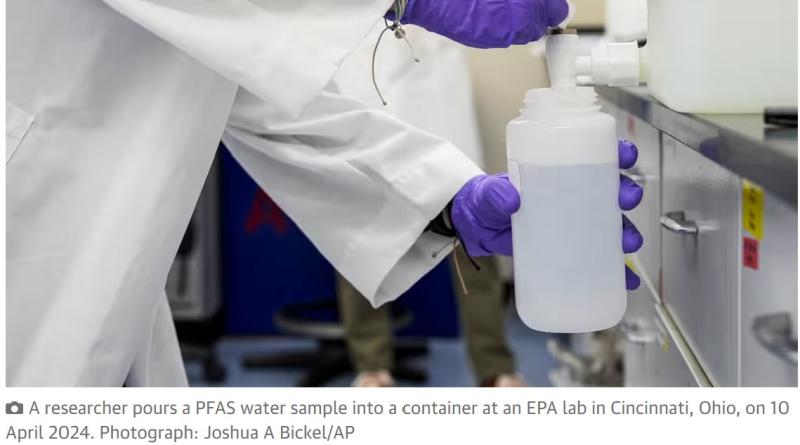EPA moves to make US polluters pay for cleanup of two forever chemicals

The Environmental Protection Agency on Friday designated two forever chemicals that have been used in cookware, carpets and firefighting foams as hazardous substances, an action intended to ensure quicker cleanup of the toxic compounds and require industries and others responsible for contamination to pay for their removal.
Designation as a hazardous substance under the Superfund law does not ban the chemicals, known as PFOA and PFOS. But it requires that release of the chemicals into soil or water be reported to federal, state or tribal officials if it meets or exceeds certain levels. The EPA then may require cleanups to protect public health and recover costs that can reach tens of millions of dollars.
PFOA and PFOS have been voluntarily phased out by US manufacturers but are still in limited use and remain in the environment because they do not degrade over time. The compounds are part of a larger cluster of forever chemicals known as PFAS that have been used since the 1940s in industry and consumer products including nonstick frying pans, water-repellent sports gear, stain-resistant rugs and cosmetics.
The term PFAS is short for per- and polyfluoroalkyl substances. The chemicals can accumulate and persist in the human body for long periods. Evidence from animal and human studies indicates that exposure to PFOA or PFOS may lead to cancer or other health problems, including liver and heart damage and developmental problems in infants and children.
The final rule issued on Friday follows strict limits set by the EPA on certain PFAS in drinking water that will require utilities to reduce them to the lowest level they can be reliably measured. Officials say the drinking water rule, announced on 10 April, will reduce exposure for 100 million people and help prevent thousands of illnesses, including cancers.
Last year, three chemical companies announced they had reached a $1.18bn deal to resolve complaints of polluting many US drinking water systems with PFAS. DuPont de Nemours, Chemours and Corteva said they would establish a fund to compensate water providers for contamination.
And earlier this month, chemical manufacturer 3M Co announced it would begin payments to manyUS public drinking water systems as part of a multibillion-dollar settlement over contamination with forever chemicals.
Joe Biden’s administration “understands the threat that forever chemicals pose to the health of families across the country”, the EPA administrator, Michael Regan, said. “Designating these chemicals under our Superfund authority will allow EPA to address more contaminated sites, take earlier action and expedite cleanups – all while ensuring polluters pay for the costs to clean up pollution threatening the health of communities.”
Besides the final rule, the EPA issued a notice clarifying that the agency will focus enforcement efforts on businesses and people who significantly contribute to the release of PFAS chemicals into the environment, including companies that have manufactured PFAS or used it in the manufacturing process, as well as federal agencies and other responsible groups.
PFAS used in firefighting foam has tainted groundwater on and near military bases and other locations where it is used in training exercises.
The Superfund law allows the EPA to clean up contaminated sites across the country and forces parties responsible for the contamination to either perform cleanups or reimburse the government for EPA-led cleanup work. When no responsible party can be identified, Superfund gives the EPA money and authority to clean up contaminated sites.
The EPA’s action follows a report by the National Academies of Science that called PFAS a serious public health threat in the US and worldwide. The EPA said in 2022 that PFOA and PFOS were more dangerous than previously thought and posed health risks even at levels so low they cannot currently be detected.



